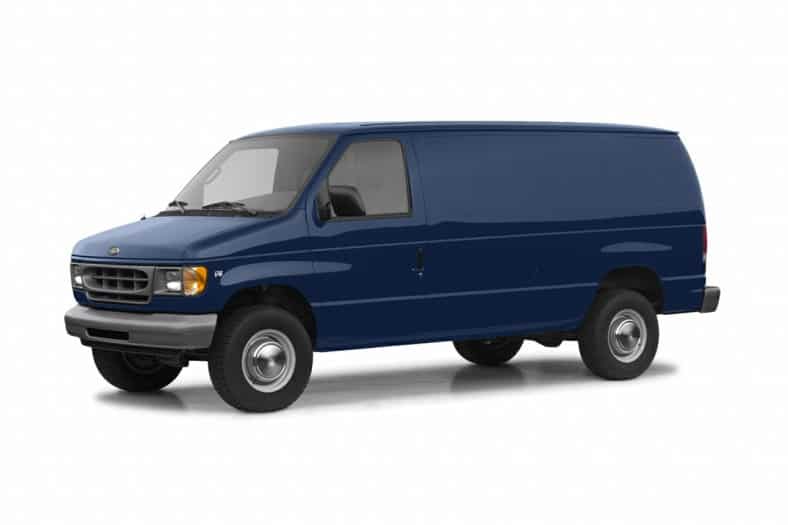
Note: This post may contain affiliate links
The Ford Econoline van is a popular choice for a simple van conversion, despite its relative age compared to models like the Ford Transit or Mercedes Sprinter. I paid just $6,000 for mine and haven’t run into any big issues for a year now. There are many with raised roofs so you get the height “luxury” of a newer model without the high price tag.
How Long Do Ford E-Series Last?
E-series vans typically reach up to 300,000 miles before reaching points of critical breakdown–they are tanks! My van came with 170,000 miles on it and I’m now at 186,000 miles–still haven’t run into any issues.
The E-series includes the E150, E250, and E350. The numbers correlate to how much weight the vans can carry (and not the size of the vans–which I had originally thought!) The lower the number, the lower the cargo carrying capacity.
E150 = 1/2 ton payload
E250 = 3/4 ton payload
E350 = 1 ton payload
This is important to consider because converting your van–depending on how many appliances you want to include–will add significant weight to it. For example, my bench-to-bed conversion setup is made out of oak wood–one of the most dense and heavy woods out there. The bed is probably the heaviest piece of build in my van.
From what I’ve seen, most van life individuals will opt for an E250 or E350 for the extra weight capacity and suspension. That being said, if you end up with an E250 or E350 and have a very light payload, it might make for a rougher ride because these vans have stiffer suspension designed for heavier payloads. Personally, I have an E250 and I think it rides smooth as butta’.

Note: This post may contain affiliate links
The Ford Econoline van is a popular choice for a simple van conversion, despite its relative age compared to models like the Ford Transit or Mercedes Sprinter. I paid just $6,000 for mine and haven’t run into any big issues for a year now. There are many with raised roofs so you get the height “luxury” of a newer model without the high price tag.
How Long Do Ford E-Series Last?
E-series vans typically reach up to 300,000 miles before reaching points of critical breakdown–they are tanks! My van came with 170,000 miles on it and I’m now at 186,000 miles–still haven’t run into any issues.
The E-series includes the E150, E250, and E350. The numbers correlate to how much weight the vans can carry (and not the size of the vans–which I had originally thought!) The lower the number, the lower the cargo carrying capacity.
E150 = 1/2 ton payload
E250 = 3/4 ton payload
E350 = 1 ton payload
This is important to consider because converting your van–depending on how many appliances you want to include–will add significant weight to it. For example, my bench-to-bed conversion setup is made out of oak wood–one of the most dense and heavy woods out there. The bed is probably the heaviest piece of build in my van.
From what I’ve seen, most van life individuals will opt for an E250 or E350 for the extra weight capacity and suspension. That being said, if you end up with an E250 or E350 and have a very light payload, it might make for a rougher ride because these vans have stiffer suspension designed for heavier payloads. Personally, I have an E250 and I think it rides smooth as butta’.
Click to Shop Used Ford Econolines on RVT.com:

Why Did Ford Stop Making the Econoline?
In 2014, Ford discontinued the production of econolines to replace them with the Ford Transits. The idea being, Transits offered a little more cargo capacity, space, gas efficiency and van configuration options.
So Why Not Just Get a Transit?
If that’s what you want, go for it! But be prepared to pay far more for your vehicle. You can buy an econoline off Facebook Marketplace or Craigslist for as low as $3,000 today, do a very simple build, and be on the road by tomorrow. Since this blog is focused on budget van life, we focus on less expensive vans, such as the econoline.
Ford E-Series: 3 Common Issues
I’m speaking about these issues from experience. I grew up with an F350 truck and am now living in an E250 van (they are very similar in build). So, whether you’re at a dealership or viewing a car from a private seller, don’t be afraid to ask the tough questions. Bring your mat to get down on the ground and look under that van for rust and other issues!
1. Exhaust Leak from Broken Manifold Bolts
Yeah, I was confused about what the heck this meant too. Basically, the exhaust manifold is responsible for collecting all of your engine’s emissions, burning them up, and sending them out the van via your exhaust pipe.
The exhaust manifold is bolted to the engine, which exposes it to extreme heat and temperature changes. The area in which the manifold is bolted to the engine–also known as the head–can expand in size when exposed to extreme heat. Over time, this constant expanding and change in size can snap the bolts/studs that attach it to the engine and can also cause the manifold to crack.
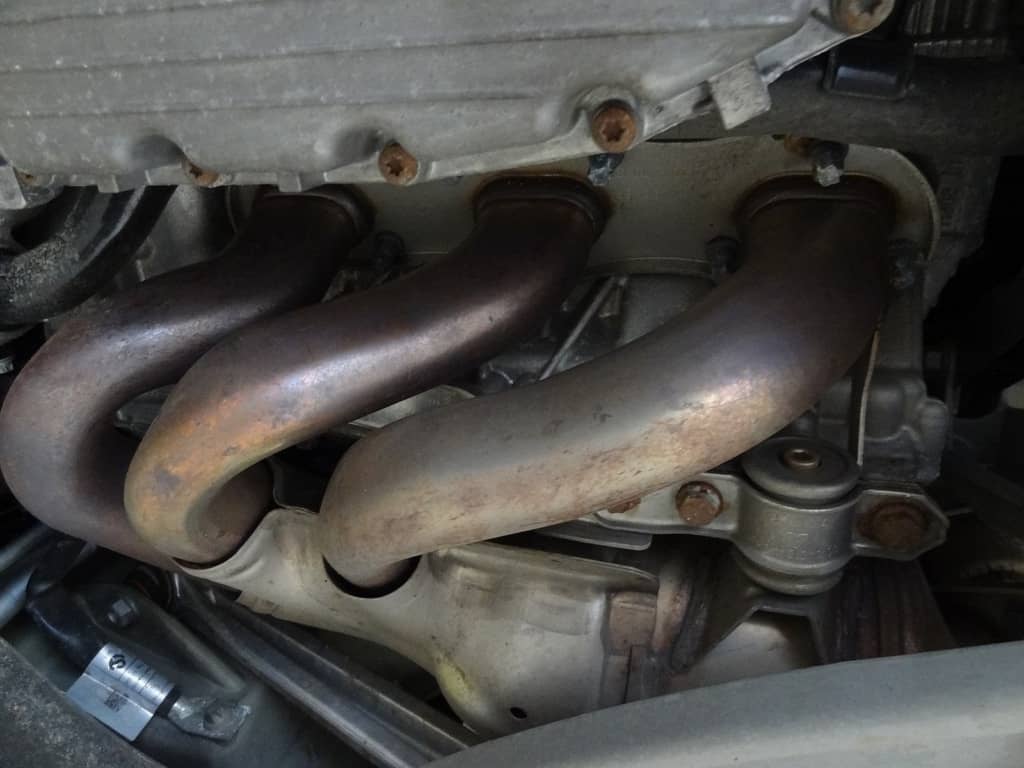
What’s more, the Ford Triton family of engines use aluminum heads instead of cast-iron–which is bad news bears. It’s bad news because aluminum expands much more under heat than cast-iron (which is the other material the engine heads are typically made of). So, you’re much more likely to have snapped bolts/studs and a cracked exhaust manifold if your van has a Ford Triton engine. Not all E-series vans have this family of engine, so it’s worth trying to find out. My van (a 1999 E250) did have this style of engine so it wasn’t surprising to have had this issue.
How Much Does it Cost to Repair Snapped Manifold Bolts?
I paid $1,200 to replace my exhaust manifold bolts. Ouch, right? It’s a pricey fix mainly because of the manual labor. The exhaust manifold is attached to the engine, which is basically located at the “heart” of the van. So accessing and working within that area is difficult and time-consuming.
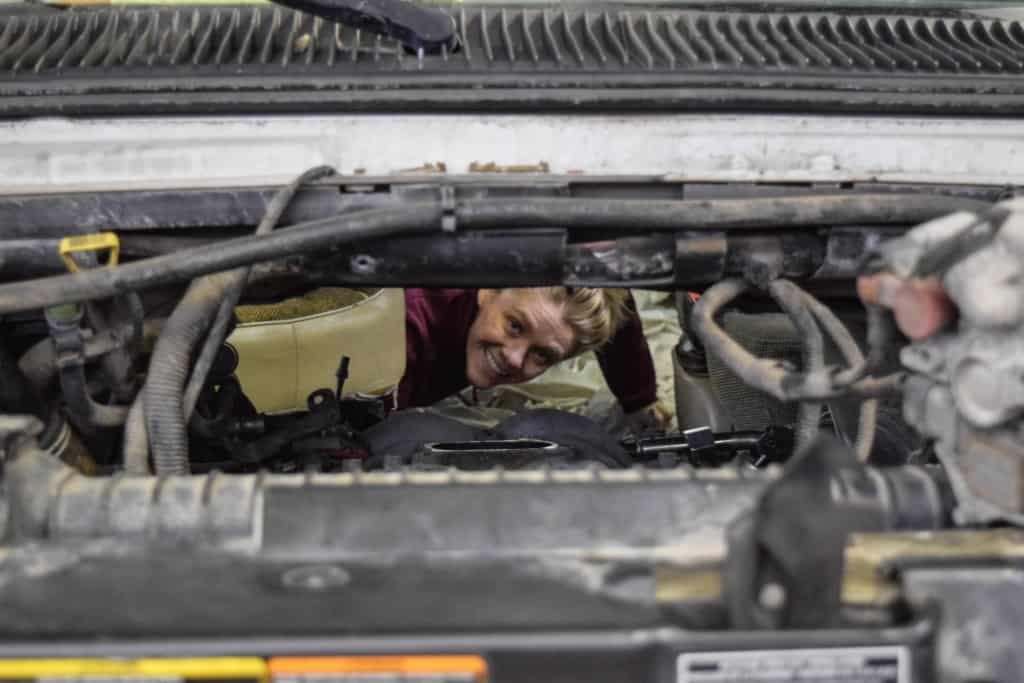
Unless you’re a mechanic or very automobile-savvy, it’ll be hard to make an accurate judgement on the exhaust manifold bolts when going to see the van before buying. You’ll have to get under the van– I was lucky because my dad was with me when viewing the van and he knew to check for these. Side note–he knew they were cracked but that didn’t stop me from buying it…that’s another story. I recommend bringing someone along who could help with this, or asking the seller if you can have a mechanic look it over before purchasing.
But now that the exhaust manifold bolts are fixed, I won’t risk emissions leaking under my hood, potentially breathing them in and having them wear down everything else under my hood. If you don’t have this fixed, over time your fuel efficiency and engine performance will decrease.
What Are Signs of Leaking Exhaust Manifolds?
A good indicator of an exhaust manifold leak is that your van makes an almost whistling, squeaking sound when you start it and run it for the first few minutes. It may never stop, or it may go away after a little, but over time it will only become louder and more constant. It will be a slow death! Here’s a more in-depth look at the risks of not fixing your exhaust manifolds.
2. Shift Linkage Loose in Steering Column
Good news is that this is a much more affordable fix! Tightening the shift linkage in a steering column is anywhere under $100 and even a brand new one should run you about $150. Both the F350 truck I grew up driving and my current van had very loose shift linkage in the steering columns.
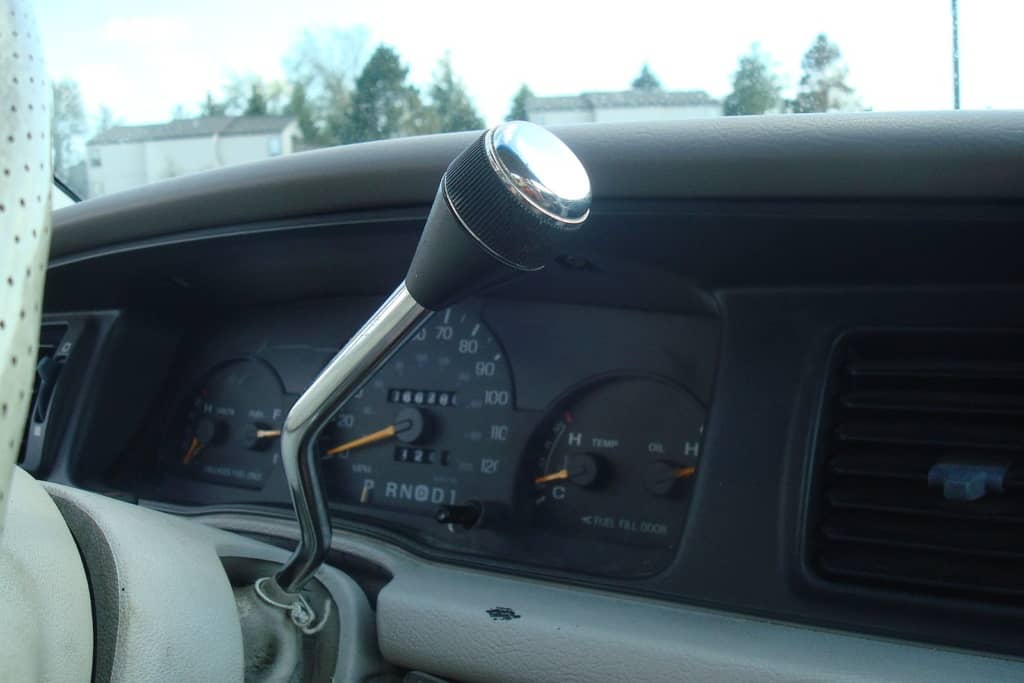
Loose shift linkage is when you shift into different gears but the shifter feels loose or the gear you’re in doesn’t match what the dashboard is saying. I would constantly throw my van into reverse, only to realize after hitting the gas pedal that I was in neutral. Thankfully, this isn’t a super critical fix but it is something that will only wear down more over time.
3. Rust On the Van Frame
Obviously, rust is a HUGE– if not the BIGGEST– problem to look out for before purchasing any van. But as someone who watched her family’s brand new F350 truck rot out FAR too quickly for how old it was, some Ford makes just do not stand up against rust.
What Causes a Van Frame to Rust?
The rust definitely stems from salted roads. Good old-fashioned table salt used to be the treatment for icy roads, but twenty years ago many highway departments switched to spraying magnesium chloride and/or calcium chloride as a pre-treatment before winter storms. These types of salts are way more corrosive than regular old sodium chloride, AKA table salt.
So, I was very happy to learn my van had spent most of its days in Southern California and Guatemala, where there is no salting of roads. The frame of my van was not too rusty. I definitely, highly recommend looking at vans from southern states. Avoid the states with winter storms and salted roads! It played a big role in why our F350 truck rotted out so quickly. I will note that in the last few years, car makers have made huge progress in making corrosion-resistant vehicles, so looking at a newer model E-series van could help with this.
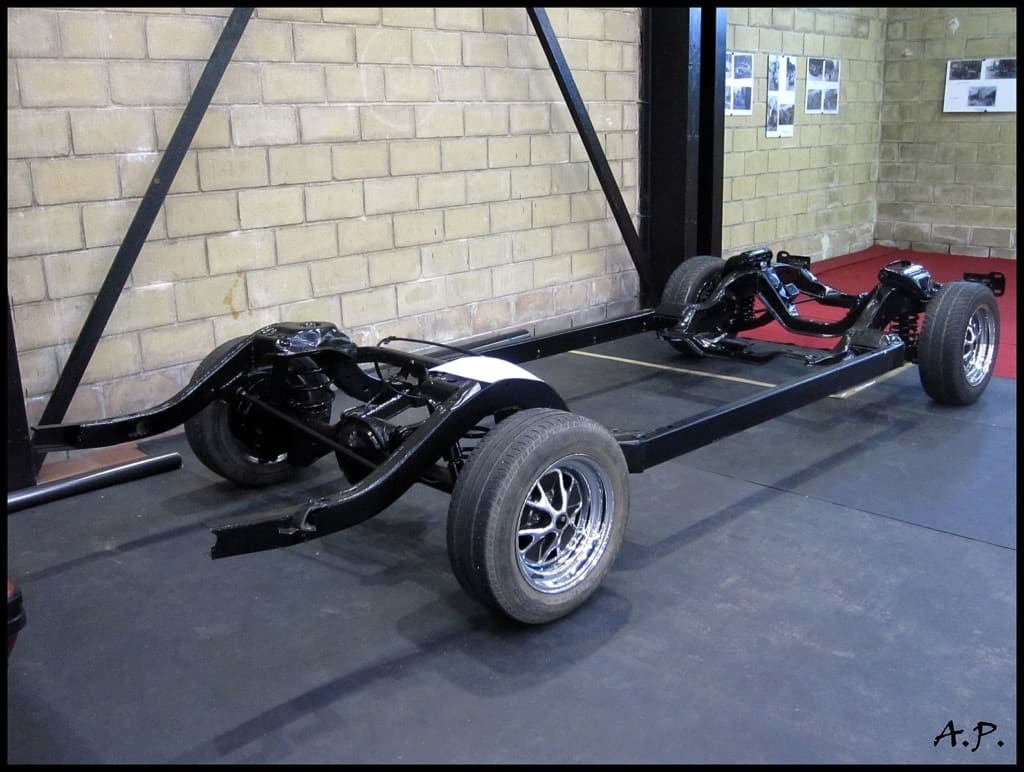
When you’re evaluating a van, look under it to see how rusty the frame looks. The frame is a structural part of the van, meaning without it, your van might as well be a pile of metal. While rust spots, say, above the wheel wells aren’t ideal, they are much less of a concern than rust on the frame.
Another thing to note is that rotted chassis mounts are a quick way to fail a safety inspection. The “chassis” is the “box” that is mounted to the frame of the van and the places that they connect are specifically called the “chassis mounts”. Whether the rot is on the frame of where the chassis mount connects, or on the chassis of where the chassis mount connects, it doesn’t matter–it’s equally as bad news for passing a safety inspection.
So, there you have it! Picking out your van to live in is hands-down the biggest van life decision–you want to go into it knowledgeable and prepared. Overall, I highly recommend the E-series because they’re relatively cheap, easy to get parts for, and reliable. Even as a 1999 Ford E250 with 174,000 miles already on it, my mechanic was pleased to tell me that the transmission, engine, and (thankfully) body frame were still in solid condition on my van.
Save this on Pinterest
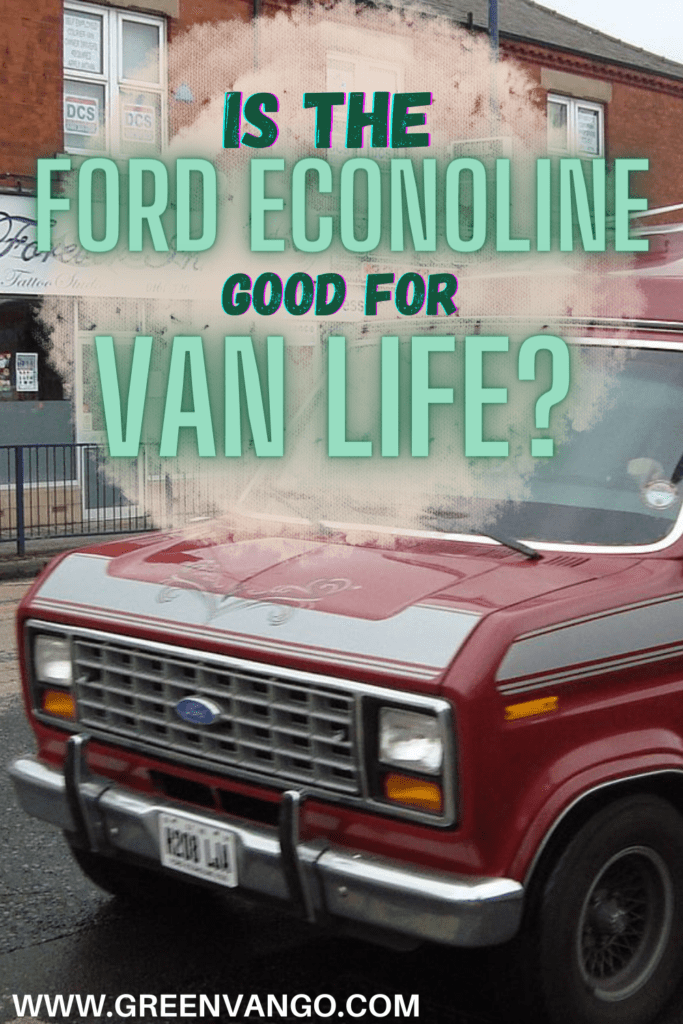
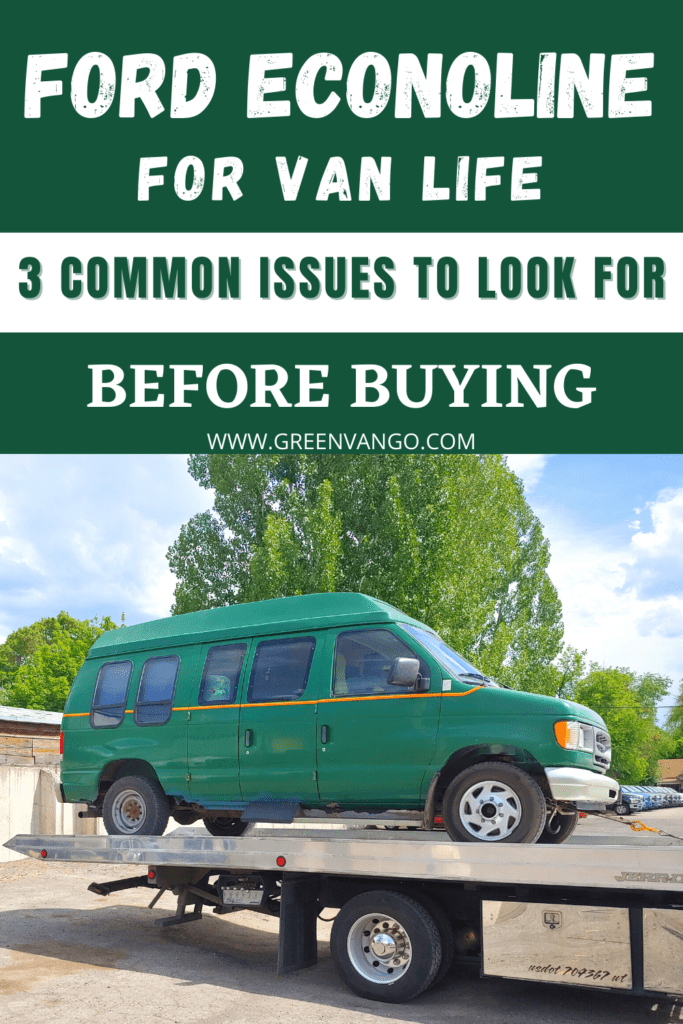
Why Did Ford Stop Making the Econoline?
In 2014, Ford discontinued the production of econolines to replace them with the Ford Transits. The idea being, Transits offered a little more cargo capacity, space, gas efficiency and van configuration options.
So Why Not Just Get a Transit?
If that’s what you want, go for it! But be prepared to pay far more for your vehicle. You can buy an econoline off Facebook Marketplace or Craigslist for as low as $3,000 today, do a very simple build, and be on the road by tomorrow. Since this blog is focused on budget van life, we focus on less expensive vans, such as the econoline.
Ford E-Series: 3 Common Issues
I’m speaking about these issues from experience. I grew up with an F350 truck and am now living in an E250 van (they are very similar in build). So, whether you’re at a dealership or viewing a car from a private seller, don’t be afraid to ask the tough questions. Bring your mat to get down on the ground and look under that van for rust and other issues!
1. Exhaust Leak from Broken Manifold Bolts
Yeah, I was confused about what the heck this meant too. Basically, the exhaust manifold is responsible for collecting all of your engine’s emissions, burning them up, and sending them out the van via your exhaust pipe.
The exhaust manifold is bolted to the engine, which exposes it to extreme heat and temperature changes. The area in which the manifold is bolted to the engine–also known as the head–can expand in size when exposed to extreme heat. Over time, this constant expanding and change in size can snap the bolts/studs that attach it to the engine and can also cause the manifold to crack.

What’s more, the Ford Triton family of engines use aluminum heads instead of cast-iron–which is bad news bears. It’s bad news because aluminum expands much more under heat than cast-iron (which is the other material the engine heads are typically made of). So, you’re much more likely to have snapped bolts/studs and a cracked exhaust manifold if your van has a Ford Triton engine. Not all E-series vans have this family of engine, so it’s worth trying to find out. My van (a 1999 E250) did have this style of engine so it wasn’t surprising to have had this issue.
How Much Does it Cost to Repair Snapped Manifold Bolts?
I paid $1,200 to replace my exhaust manifold bolts. Ouch, right? It’s a pricey fix mainly because of the manual labor. The exhaust manifold is attached to the engine, which is basically located at the “heart” of the van. So accessing and working within that area is difficult and time-consuming.

Unless you’re a mechanic or very automobile-savvy, it’ll be hard to make an accurate judgement on the exhaust manifold bolts when going to see the van before buying. You’ll have to get under the van– I was lucky because my dad was with me when viewing the van and he knew to check for these. Side note–he knew they were cracked but that didn’t stop me from buying it…that’s another story. I recommend bringing someone along who could help with this, or asking the seller if you can have a mechanic look it over before purchasing.
But now that the exhaust manifold bolts are fixed, I won’t risk emissions leaking under my hood, potentially breathing them in and having them wear down everything else under my hood. If you don’t have this fixed, over time your fuel efficiency and engine performance will decrease.
What Are Signs of Leaking Exhaust Manifolds?
A good indicator of an exhaust manifold leak is that your van makes an almost whistling, squeaking sound when you start it and run it for the first few minutes. It may never stop, or it may go away after a little, but over time it will only become louder and more constant. It will be a slow death! Here’s a more in-depth look at the risks of not fixing your exhaust manifolds.
2. Shift Linkage Loose in Steering Column
Good news is that this is a much more affordable fix! Tightening the shift linkage in a steering column is anywhere under $100 and even a brand new one should run you about $150. Both the F350 truck I grew up driving and my current van had very loose shift linkage in the steering columns.

Loose shift linkage is when you shift into different gears but the shifter feels loose or the gear you’re in doesn’t match what the dashboard is saying. I would constantly throw my van into reverse, only to realize after hitting the gas pedal that I was in neutral. Thankfully, this isn’t a super critical fix but it is something that will only wear down more over time.
3. Rust On the Van Frame
Obviously, rust is a HUGE– if not the BIGGEST– problem to look out for before purchasing any van. But as someone who watched her family’s brand new F350 truck rot out FAR too quickly for how old it was, some Ford makes just do not stand up against rust.
What Causes a Van Frame to Rust?
The rust definitely stems from salted roads. Good old-fashioned table salt used to be the treatment for icy roads, but twenty years ago many highway departments switched to spraying magnesium chloride and/or calcium chloride as a pre-treatment before winter storms. These types of salts are way more corrosive than regular old sodium chloride, AKA table salt.
So, I was very happy to learn my van had spent most of its days in Southern California and Guatemala, where there is no salting of roads. The frame of my van was not too rusty. I definitely, highly recommend looking at vans from southern states. Avoid the states with winter storms and salted roads! It played a big role in why our F350 truck rotted out so quickly. I will note that in the last few years, car makers have made huge progress in making corrosion-resistant vehicles, so looking at a newer model E-series van could help with this.

When you’re evaluating a van, look under it to see how rusty the frame looks. The frame is a structural part of the van, meaning without it, your van might as well be a pile of metal. While rust spots, say, above the wheel wells aren’t ideal, they are much less of a concern than rust on the frame.
Another thing to note is that rotted chassis mounts are a quick way to fail a safety inspection. The “chassis” is the “box” that is mounted to the frame of the van and the places that they connect are specifically called the “chassis mounts”. Whether the rot is on the frame of where the chassis mount connects, or on the chassis of where the chassis mount connects, it doesn’t matter–it’s equally as bad news for passing a safety inspection.
So, there you have it! Picking out your van to live in is hands-down the biggest van life decision–you want to go into it knowledgeable and prepared. Overall, I highly recommend the E-series because they’re relatively cheap, easy to get parts for, and reliable. Even as a 1999 Ford E250 with 174,000 miles already on it, my mechanic was pleased to tell me that the transmission, engine, and (thankfully) body frame were still in solid condition on my van.
Save this on Pinterest



16 Comments
Carlisle Baptiste
Great information! This is going to go a long way when it comes to buying my van. Thank you!
Hilary
I’m psyched to hear this, Carlisle! Thanks for the kind words–don’t hesitate to reach out again if more questions pop up. Good luck on your van journey!
Samantha
I got so lucky when I bought my van. It was a former Phoenix Arizona disabled school bus, had no rust, and was is in great shape. Bought it 3 years ago in Quartzsite Arizona for $3100 and have been living it ever since! Thank you for sharing your travels and life with us!!!!
Hilary
That’s amazing, Samantha! I imagine it’s what any vanlife enthusiast hopes for when making the big purchase. Wish you happy and safe travels fellow econoliner!
Geneva
I’m so glad I came upon your post, ots so informative. I work for a nursing agency which does not cover travel expenses in some states so I am looking to buy a van to convert to a home on wheels just for this reason. Before reading your post, it helps me make a better choice for van selection ,what to look for as well as what to expect and prepare for. Thank you #VanlifeNurse
Hilary
Geneva, so happy I could be of help here. Congrats on starting this new project, #vanlifenurse! Very exciting!
Robert Lech
Thanks for the info. I’ve been looking at the E-series as a possibility for conversion.
Hilary
Very glad it was helpful, Robert. Good luck with whichever type of rig you decide on!
John Garrity
Lets not forget about spark plugs that break off when changing on the triton engines.
My transmission went out at 160,000. ($2000)
Burns up front tires
Fuel related issues just cost me $1000.00.door handles break off.one of the roughest riding vans i ever.owned.
2006 extended e250,186,000
Its like a bad marriage ,we have to see each other everyday ,so much invested .
joe
Hi, just bought a 2002 for $3200 with some issues, back door wont open , 1 side door is stuck, sounds like its blowing air but cant feel anything.. but the biggest problem is the engine sounded rough, shirted ok but suddenly it applied its own gas and started acceleraing on its own!! being the brakes are soft it was hard to stop to i threw it into park, lol any ideas?
Kyle
Just got a 95 econoline e150 wondering what optiona i have to put a higher roof. And about how much it should cost. I reallyd just need about 4-5 feet in the middle of the van if thats possible or cheaper…
Hilary
Hey Kyle, I can’t speak to this very well since my van came with a raised roof already installed. But I recommend checking out Bob Wells’ post on this topic (he’s an RVing expert, an OG in the community!) article: https://cheaprvliving.com/installing-a-new-high-top-on-your-van/ I hope that’s helpful! Good luck!
Stephanie Lacy
Thanks for this post. WE are currently Van hunting and will take some of this advice and concerns with us upon our inspection.
Lorraine
Thank you for such useful information. I am thinking of purchasing a 1993. Now I know what yo look for.
Hilary
Thanks for the kind words, Lorraine! A ’93 Econoline sounds awesome–if you end up purchasing it, here are some interior design ideas for an Econoline from my build 🙂 https://www.outdoorsynomad.com/ford-econoline-camper-van-interior/ – bid you happy and safe travels!
Ray
Thanks for the information. I got lucky getting my 2011 Ford E350xlt. Got it at a government auction. Has 45k miles on it and runs like a champ.